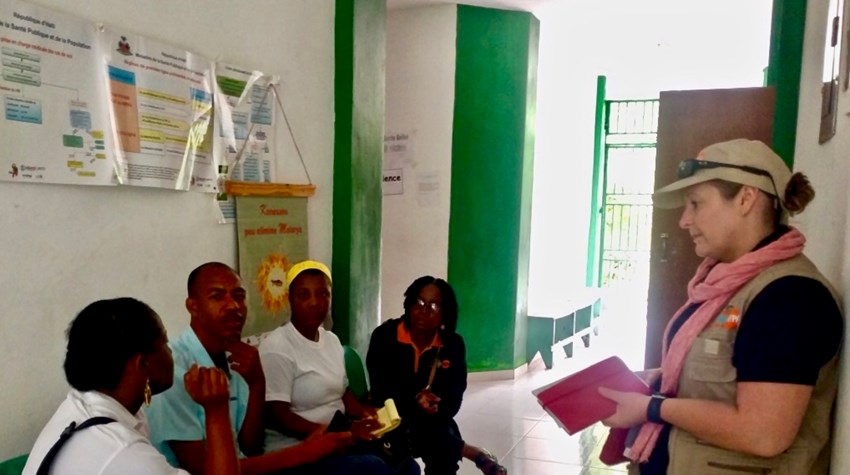Flying into Port-au-Prince, Haiti on September 6, 2017 on a mostly empty flight – one of the last ones before the airport closed in preparation for Hurricane Irma – I was mentally preparing to ‘hit the ground running’ in my new role as a Humanitarian Response Coordinator. I was to be stationed with UNFPA, the United Nations Population Fund, whose priorities include extending basic maternal and reproductive health care services to the most vulnerable, while building capacity to protect women and girls against gender-based violence.
The hyperactive Atlantic hurricane season of 2017 is considered the most costly to date, causing more than 400 deaths and a damage bill of over US$282 billion. It produced 17 named tropical storms, of which six were major hurricanes (Category 3, 4 or 5), including Category 5 Hurricanes Irma and Maria. Despite not making landfall in Haiti, Hurricanes Irma and Maria caused destructive winds and widespread flooding that affected over 10,000 households in the Northern departments. UNFPA deployed a rapid assessment team on September 9, which I joined two days later when I participated in an inter-agency assessment with the Health Ministry. While it was not a large emergency response, the Civil Protection Department requested assistance from the international community. UNFPA and our partners reached over 3,400 affected women and girls through 16 mobile medical clinics, and distributed 500 dignity kits over three months.
While Haiti was lucky in 2017, this was not the case in October 2016 when Hurricane Matthew devastated Southern Haiti, killing over 500 people and affecting over 2 million. When I arrived nearly 12 months later, many local communities were still dealing with rebuilding, loss of livelihoods and food insecurity, as well as accessing already stretched basic health services. Haiti is also considered the poorest country in the Latin America and Caribbean region ranking 163rd of 188 countries on the Human Development Index and the World Bank reports that more than 58% of Haitian’s live below the national poverty line (23% live below $1.90 a day) which puts them more at risk during emergencies. Maternal mortality is also the highest in the region (359 deaths per 100,000 live births) and UNFPA reports that only about half of Haitian women have their births attended to by skilled health personnel and only a similar percentage have their family planning needs met.
During an emergency these already poor outcomes risk increasing, and it is the objective of UNFPA’s emergency response to ensure that maternal mortality and morbidity doesn’t increase exponentially. My role included strengthening UNFPA’s emergency preparedness, which is critical in ensuring that when a natural disaster does occur, it is less likely to have such a large humanitarian impact. This includes ensuring that the country office meets its minimum preparedness objectives, staff and partners are trained and ready to respond, and that emergency relief supplies – such as dignity kits, solar lamps, cooking kits – are prepositioned and ready to be deployed for the start of Hurricane season.
In a country like Haiti, the high risk of natural hazards is complicated by a low capacity to respond to disasters. Knowing the risks is only the first step – we must have adequate resources to properly prepare, and while a lot of progress has been made in Haiti, there is a long way to go. As we enter the 2018 Atlantic hurricane season, I am worried how Haiti will fare. While we can hope for another 2017 near miss, we must continue to prepare for a 2016 Matthew-like event that could once again devastate Haitian communities and push already vulnerable families further into poverty and less able to respond to the next disaster.


